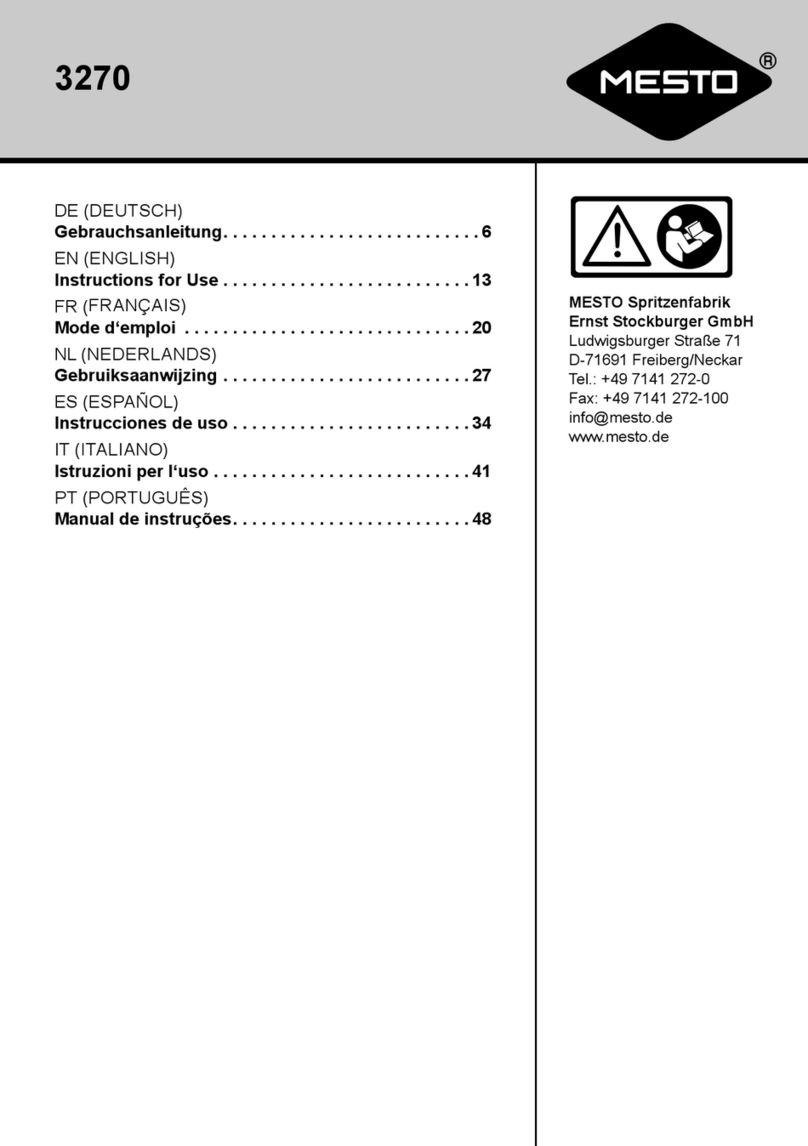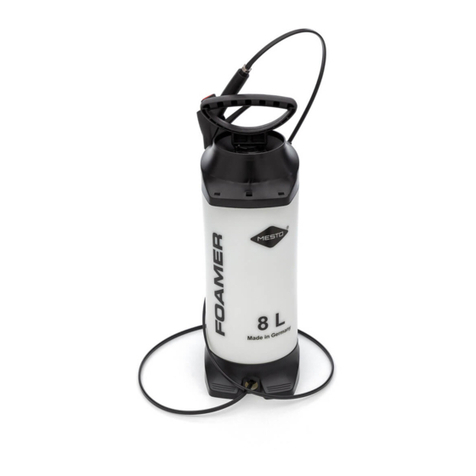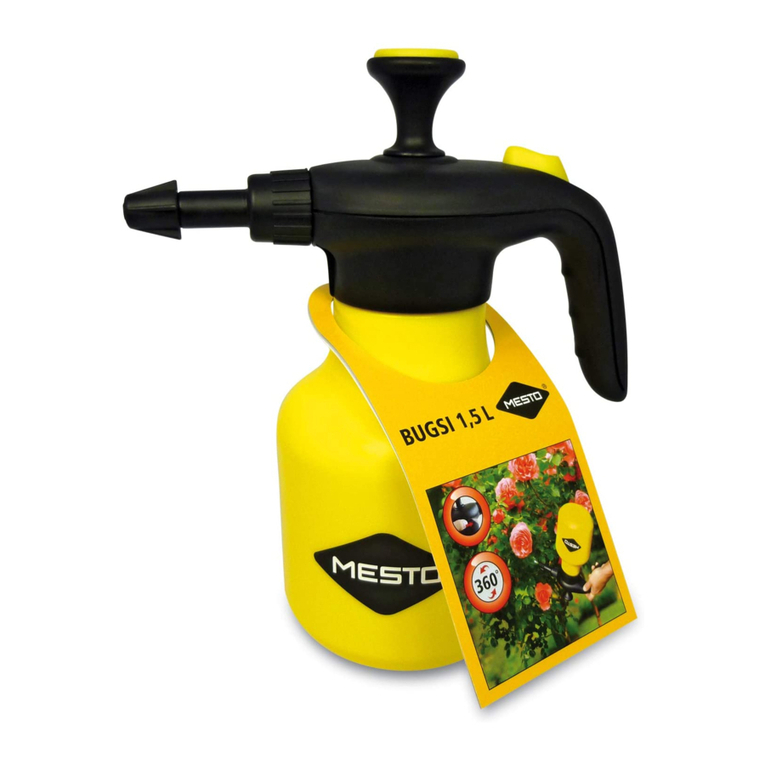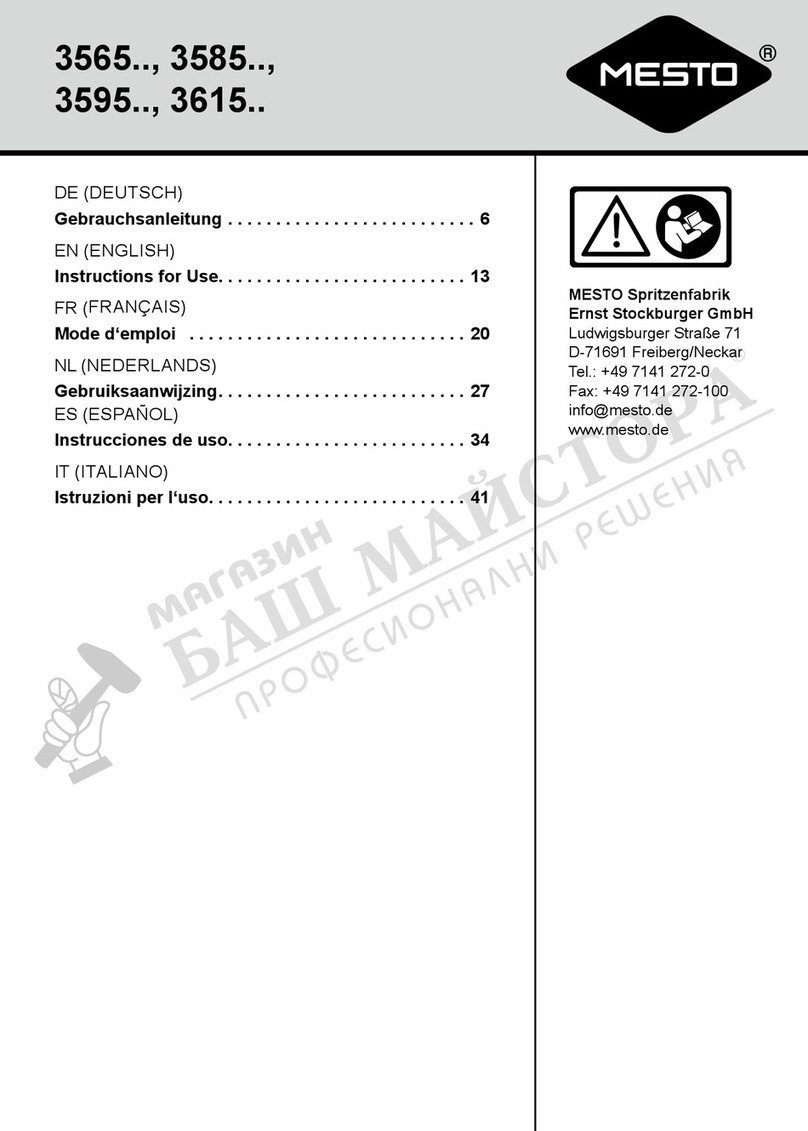Mesto FOAMER 3270FO User manual
Other Mesto Paint Sprayer manuals

Mesto
Mesto 3270 Series User manual

Mesto
Mesto 3552 User manual

Mesto
Mesto PICO 3232 User manual

Mesto
Mesto RS 120 User manual

Mesto
Mesto 3132 Series Instruction manual

Mesto
Mesto FERROX 3565 User manual

Mesto
Mesto MAXIMA 3238 User manual

Mesto
Mesto EASY User manual

Mesto
Mesto 3130 Series Instruction manual

Mesto
Mesto FOAMER 3270FO User manual

Mesto
Mesto 3132 Series User manual

Mesto
Mesto 3132 FE Instruction manual

Mesto
Mesto FLEXI 3131 Instruction manual

Mesto
Mesto RESISTENT EXTRA 3592 User manual

Mesto
Mesto 3132 Series Instruction manual

Mesto
Mesto FERROX 3565 User manual

Mesto
Mesto HERBI 3232U User manual

Mesto
Mesto 3598P User manual

Mesto
Mesto 3270 Series User manual

Mesto
Mesto MAXIMA 3238 User manual


























